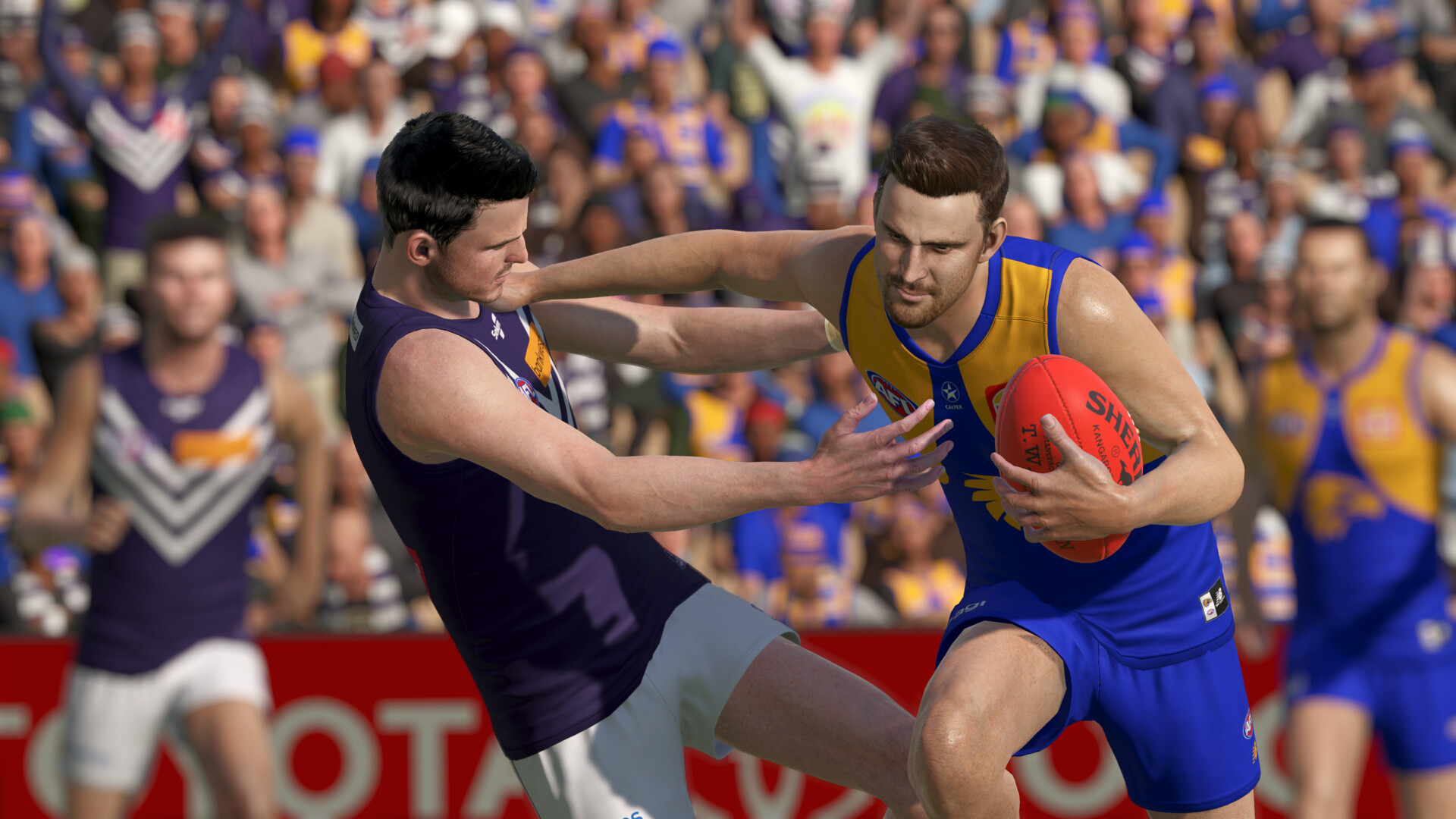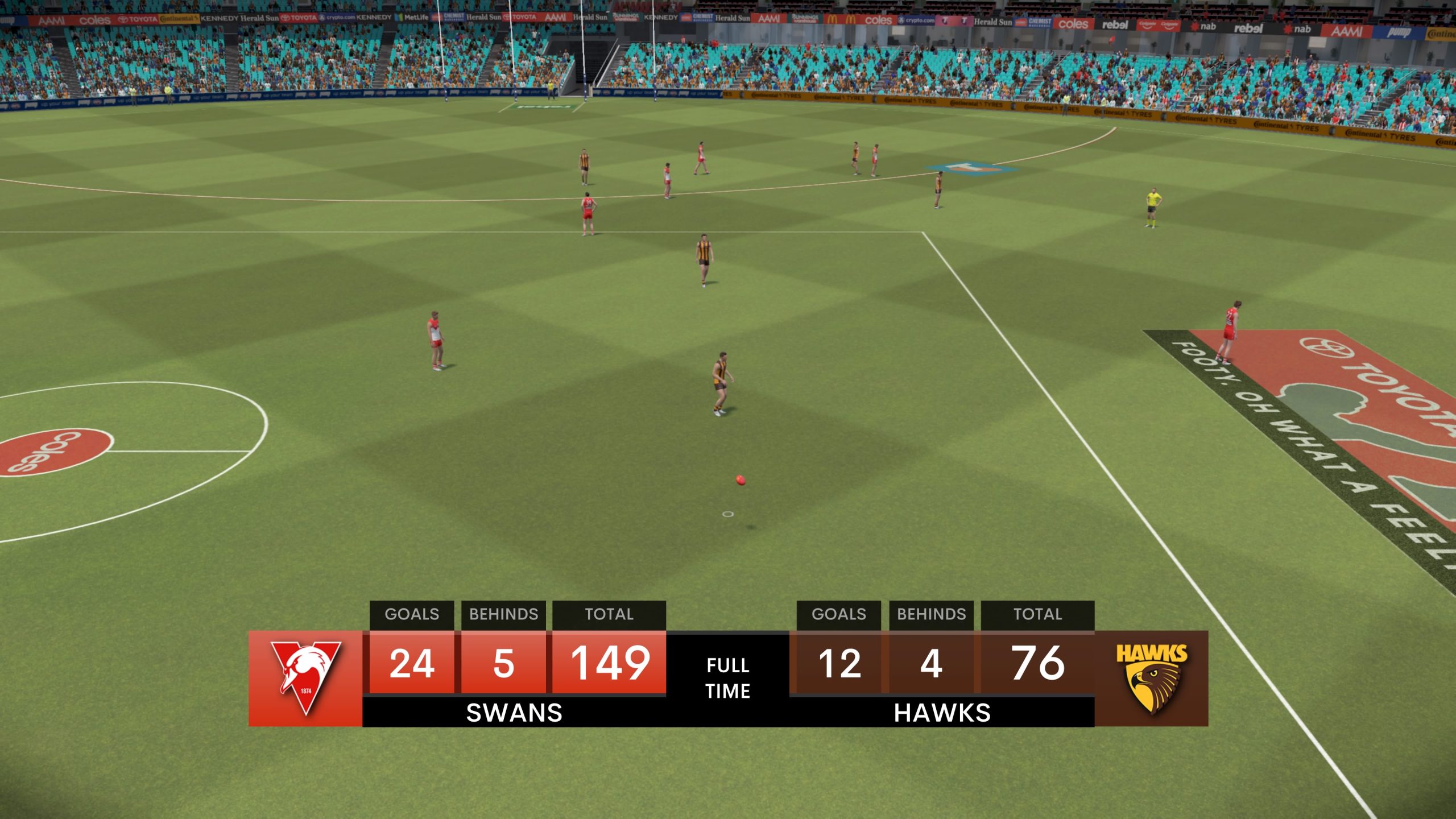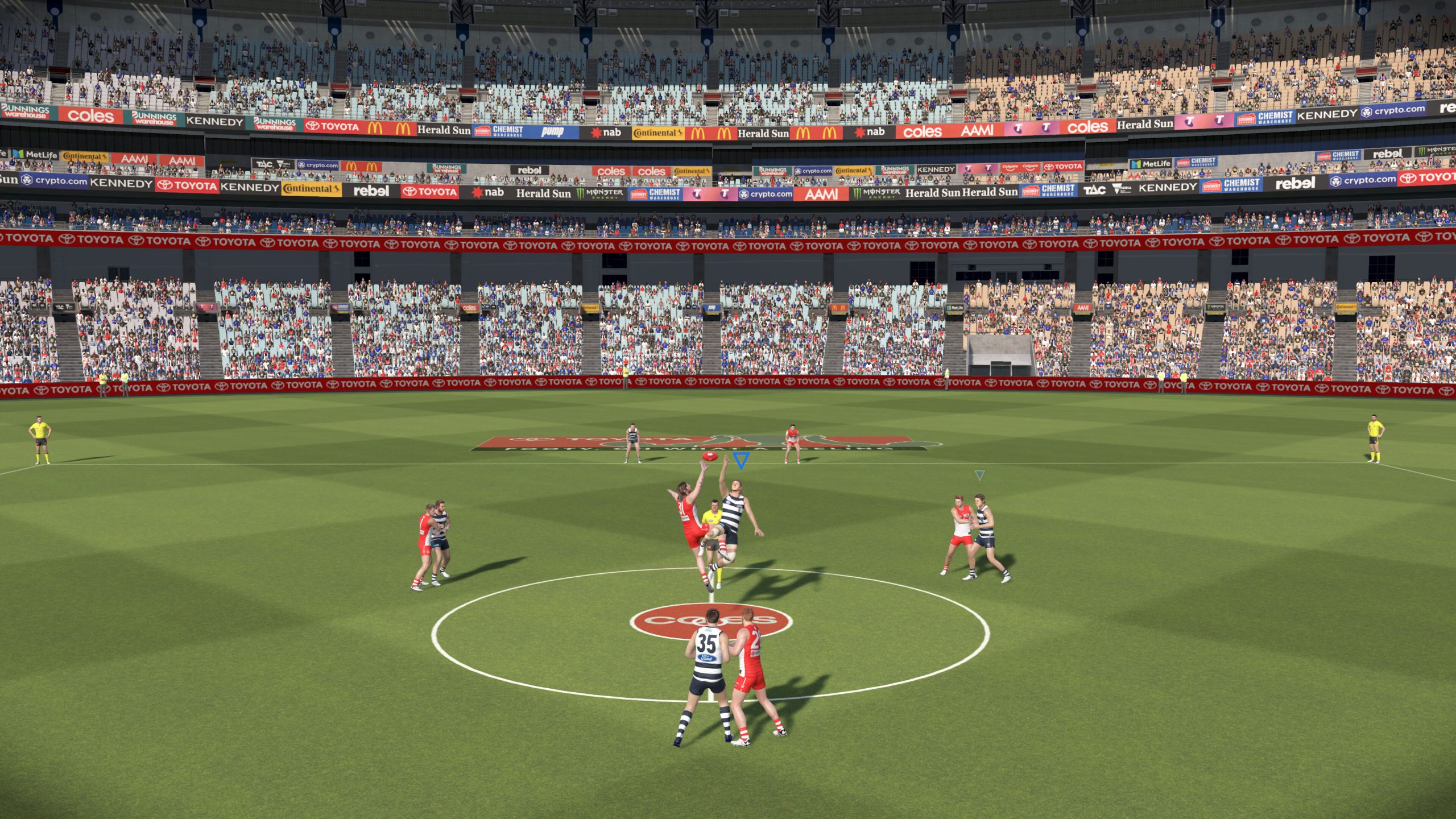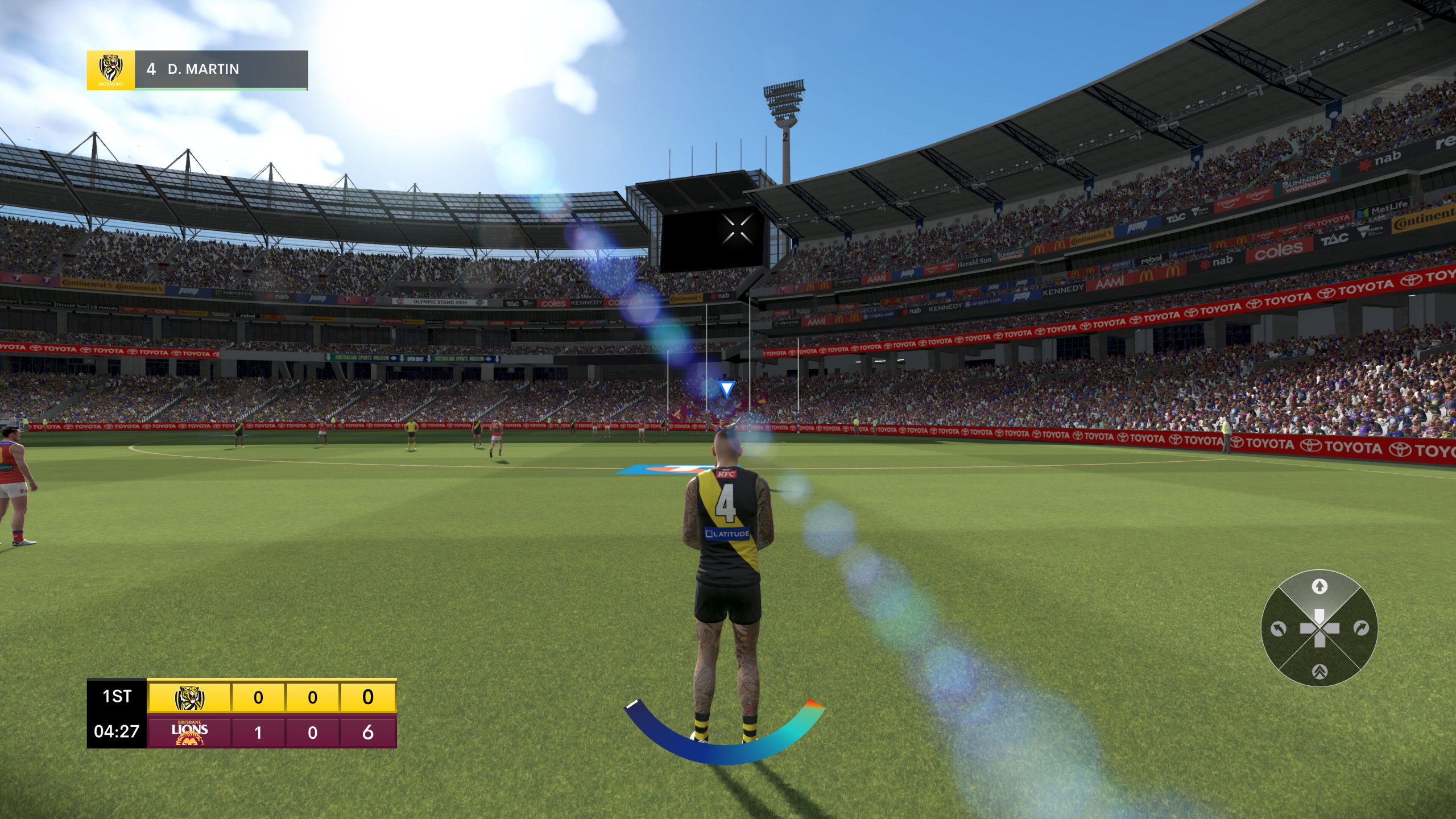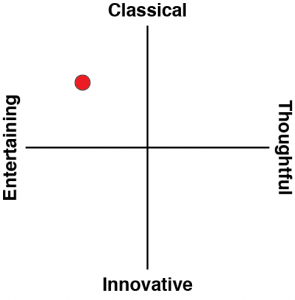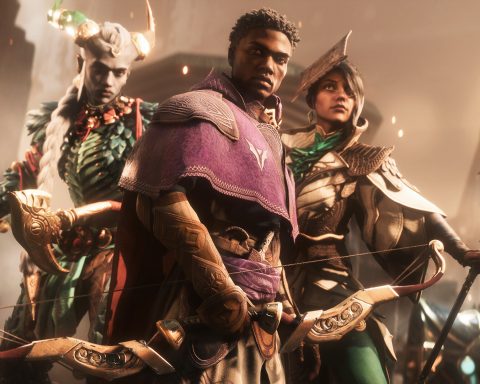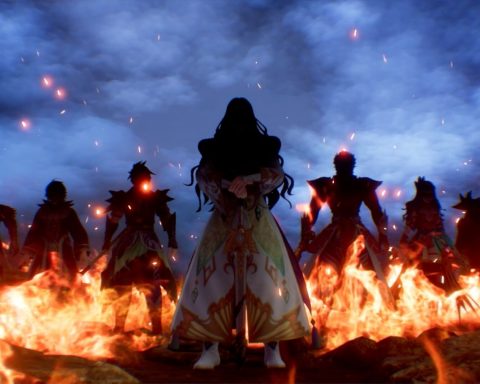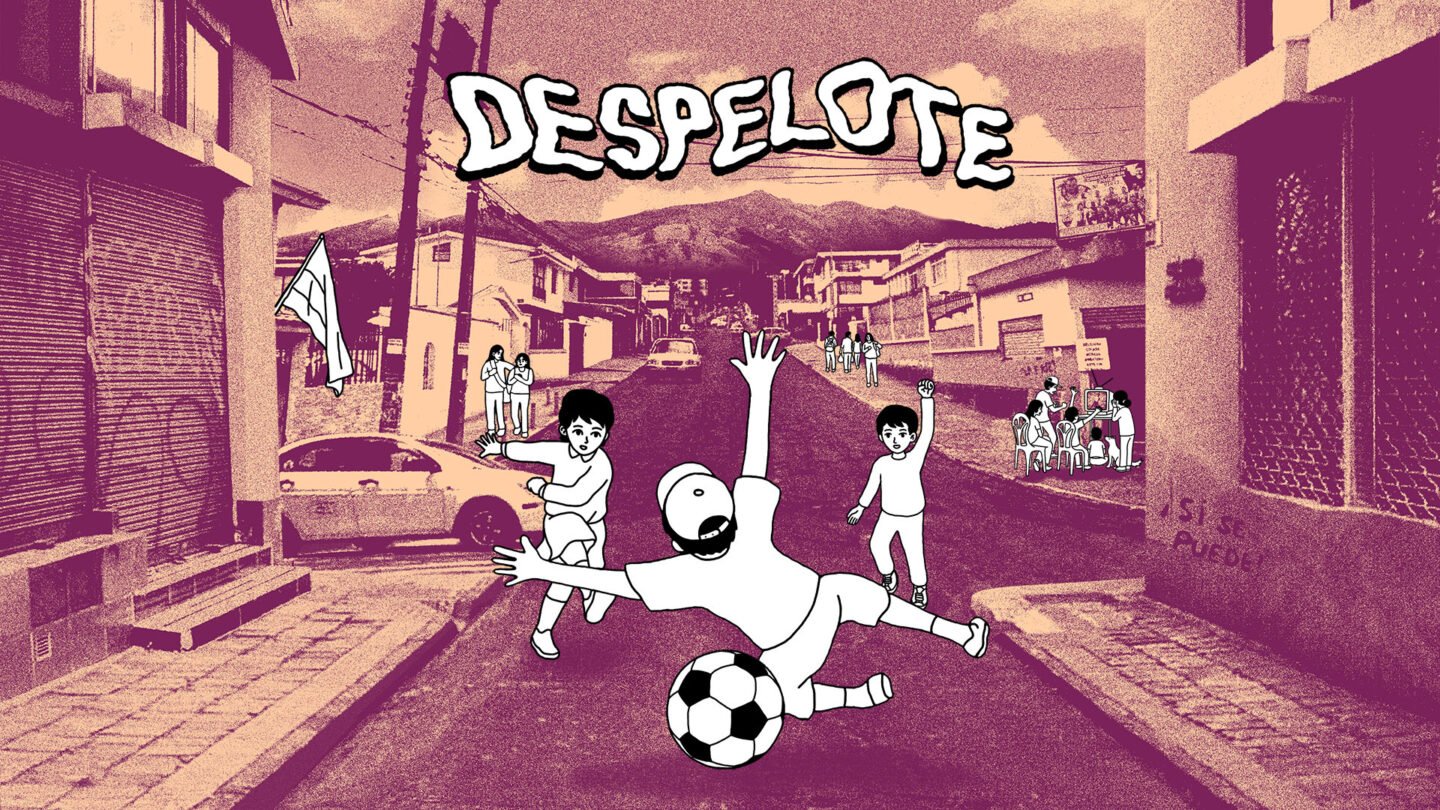Since AFL 23 launched a week ago, patches have been released nearly every day. The game was released in a poor state (note: as I noted in that article, I have in the past worked with Big Ant, the developer of the game, though I have not had any association with them in well over a year), and scrambling patches at this rate is never ideal from an optics point of view. Additionally, several major features are still missing from the game. However, for all the above, having seen the direction the patches are going, I feel confident to say this now: AFL 23 already plays a very good game of AFL, and it’s only going to get better.
AFL is not a pretty or elegant sport. The way players clamour around the ball and the 360-degree flow of the game make it much more complex than other football codes, which are more linear and structured. This translates into something that is decidedly hard to build into an interactive game, as you could have a half dozen (if not more) players scrambling through the dirt to grab at the ball one moment, only for one to lob it high in the air, 50 feet down the ground, and at the other end, a player will use the back of another player to scramble up and catch the ball. There is a lot to program into that short, five-second sequence alone, and you can’t borrow from other games to do it, either, as AFL plays like nothing else out there.
AFL 23 more-or-less gets the chaos right. There are moments when things get too frenetic for the engine, and actions such as passes, tackles and kicks don’t work at the press of a button as they should. Those are thankfully rare (and getting better with each patch), but it’s still present enough to leave the impression of imprecision about the mechanics, and that can be momentarily frustrating. The worst of this comes when play needs to be started or restarted. There the umpire will bounce or toss the ball, and the subsequent swarm of players, combined with the slightly clunky pass, kick and tackle mechanics, make the whole experience feel like an exercise in button mashing rather than something you can really control as the player. You can still win games through the messy scrap, but Big Ant needs to continue to refine this so that passes happen when you want them to, your players don’t just stand idle when they should be tackling, and you can get a kick off without giving your opponent a few seconds of kicking animation to close and spoil the effort.
With that being said, the real sport is just as messy. With a bit further refinement so that the chaos comes across as a deliberate design quality, rather than a consequence of imprecise mechanics, there won’t be much to complain about there.
The kicking and marking game, meanwhile, is much further along. This feels genuinely good. Working the ball up the field via a series of well-placed kicks and marks is as rewarding as pulling off a complex passing play in FIFA, and once you’re in range, switching to the goal kick camera to watch the player blast the ball through for a full goal is thrilling. There is some work to be done in this area. Wind does not play a significant role (making kicking goals far too easy, and taking the tactical importance of behinds out of the game), and the marking process could be clearer. But it’s still the best we’ve seen in an AFL game to date, and by a significant margin.
The latest patch brought a guide to explain how to play AFL 23. Before then, you had to figure it out on the field on your own. The guide is only mildly sufficient – it’s just a bunch of text with no tutorials or explainer videos – and so while it passes at a bare minimum, this is a missed opportunity. Particularly if AFL 23 is sold in markets outside of Australia. This is a confusing sport for newcomers, and a video game really should have been used as an onboarding tool to find new players overseas. As it is, I imagine that anyone picking up AFL 23 out of curiosity will still need to hit YouTube to learn what the sport is about first. However, if you are familiar with AFL, you should be able to find your way around the controller and field quickly enough. One of the things that I have really appreciated about AFL 23 is that, unlike the previous AFL Evolution titles, Big Ant has kept things fairly the controls and play fairly simple and straightforward. There’s no need to memorise a few dozen inputs, which gives the game a pleasant pick-up-and-play quality. That in turn makes it a good option for multiplayer sessions when pals come over for a BBQ or whatever.
Currently, there are only three options for play: A one-off match, a season, and online. Prior to launch, there was a lot of talk about the inclusion of a card mode, similar to what is in FIFA and MLB The Show. However, there’s currently no news on when that’s actually going to be patched in. Perhaps more disappointing than that, however, is the lack of teams. Currently, you can only play as the main teams in the AFL and WAFL leagues. That is to say, the top professional leagues. There are plenty of teams in those leagues, but that still only represents the tiniest fraction of the sport of AFL. State leagues are coming, but even when they are there, the limited range of teams will be a missed opportunity. Above and beyond its status as a top professional sport in Australia, AFL has a very (very) fine history as a community-building amateur sport. For example, the Tiwi Islands in Australia’s north host the Tiwi Islands Football League, and it is a critical part of the island’s culture. In fact, that league alone has 900 participants on an island with a population of just 2,600. AFL 23 could have been an excellent vehicle to recognise the importance of the sport to grassroots Australian culture, rather than just the big corporate vision for the sport.
Similarly, I am enormously disappointed that Big Ant ignored international competition, when it was there in the AFL Evolution titles. Contrary to popular knowledge, AFL is played internationally and there is a world cup (which Australia does not participate in, for obvious reasons). I realise that the International Cup was probably not the most popular mode in AFL Evolution, but for the sake of growing the sport, giving people in the UK, US, Japan, New Zealand, France and elsewhere the opportunity to play as their home nation would have been a welcomed gesture. And it would have been good for the sport, which at some point is going to need to find a way to make inroads into international markets.
On the positive side, the players and teams that are in the game look, generally, incredible. Most of the players have been captured to a high degree of photorealism, and each of the stadia also looks amazing (particularly when playing under lights). There is a slight issue with AFL as a sport in that because of the distances and speed with which the ball travels over a very large field, the only camera angles that are properly playable are pulled right back. Because of this, everything can be a little small on screen, but while this results in a loss of detail, the animation is good, and having so many players running around in all directions gives AFL 23 the very unique energy of the sport.
There’s more work to do with AFL 23, and I’m expecting regular patching for a few weeks yet. However, I can’t sit on my review forever, so what I’ll say is this: The game has already evolved from a disastrous launch to become the finest AFL game ever. That’s a ridiculously low bar to cross, I know, but once Big Ant have brought in the final features and refined the mechanics to fully realise their vision, this will be a truly impressive representation of one of the most iconic parts of Australian culture.
